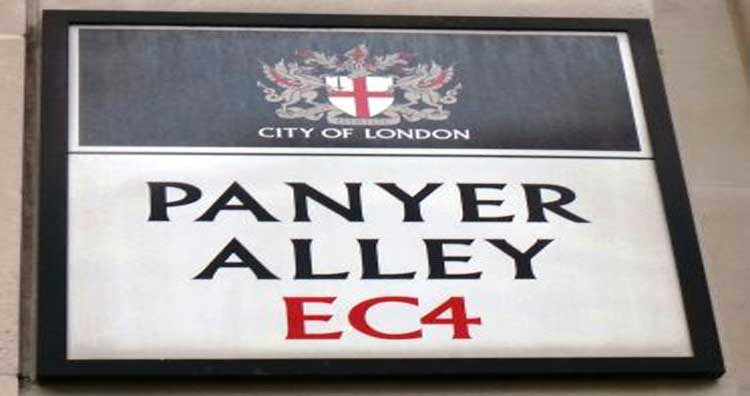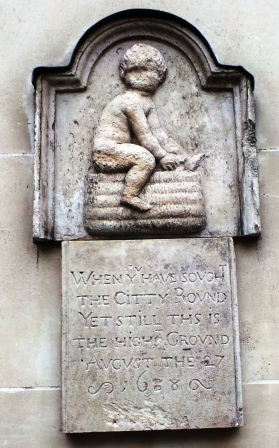
Leaving St Paul's Underground Station en route to St Paul's Cathedral, you might be in too much of a hurry to pause and take in a weatherworn stone that is attached to the wall by Cafè Nero.
You might also fail to notice that the rather nondescript thoroughfare you're heading along bears the curious name of Panyer Alley.
However, to miss the boy and the thoroughfare's name would be a great pity - for the alley is a genuine throwback to bygone London, whilst the boy has been trying, unsuccessfully, to remove a troublesome thorn from his foot for over 400 years.
So he most certainly deserves, if not your interest, then at least your sympathy.

Until the redevelopment of Paternoster Square in the late 1990's, a flight of steps led into the square. more or less. where the boy is now located and he was sitauted on the wall by these steps.
However, with the rebuilding, the steps are now gone and Panyer Alley itself, is now the walk way that leads from St Paul's Underground Station to St Paul's Cathedral beyond.
But, to give the boy his due. he's still determined to remove that darned thorn from the sole of his foot.
He sits here on his upturned basket (or Panyer) and, on close inspection, you'll see that he is as naked as the day he was born - a nod, if that is the correct expression, to the fact that Panyer boys were not particularly well remunerated.
If he ever had a face, it has long since been worn away by the countless harsh winters he must have endured.
But, it is the inscription beneath him that is the most intriguing aspect of the Panyer Boy relief.
For it, quite boldly, tells those passersby by that bother to read it:-
When ye have sought the City Round. Yet still this is the highest ground. August 27th 1688.
These words remember the fact that, when the Roman's founded their settlement of Londinium, they built it on two hills, Ludgate Hill and Cornhill. These were gravel hills that rose out of the marsh and clay of the Thames's flood plain.
It was long believed that the higher of the two hills was Ludgate Hill, on top of which both St Paul's Cathedral and the surrounding buildings stand.
However, with the advent of modern surveying techniques, a more accurate measure of the two hills was able to be taken and this resulted in the discovery that Cornhill is, in fact, the higher of the two by about 12 inches!
This, of course, matters little to the Panyer Boy. whose sole daily pre-occupation, ever since he first plonked himself on his upturned basket all those years ago, has been trying to prise that accursed thorn from his foot.